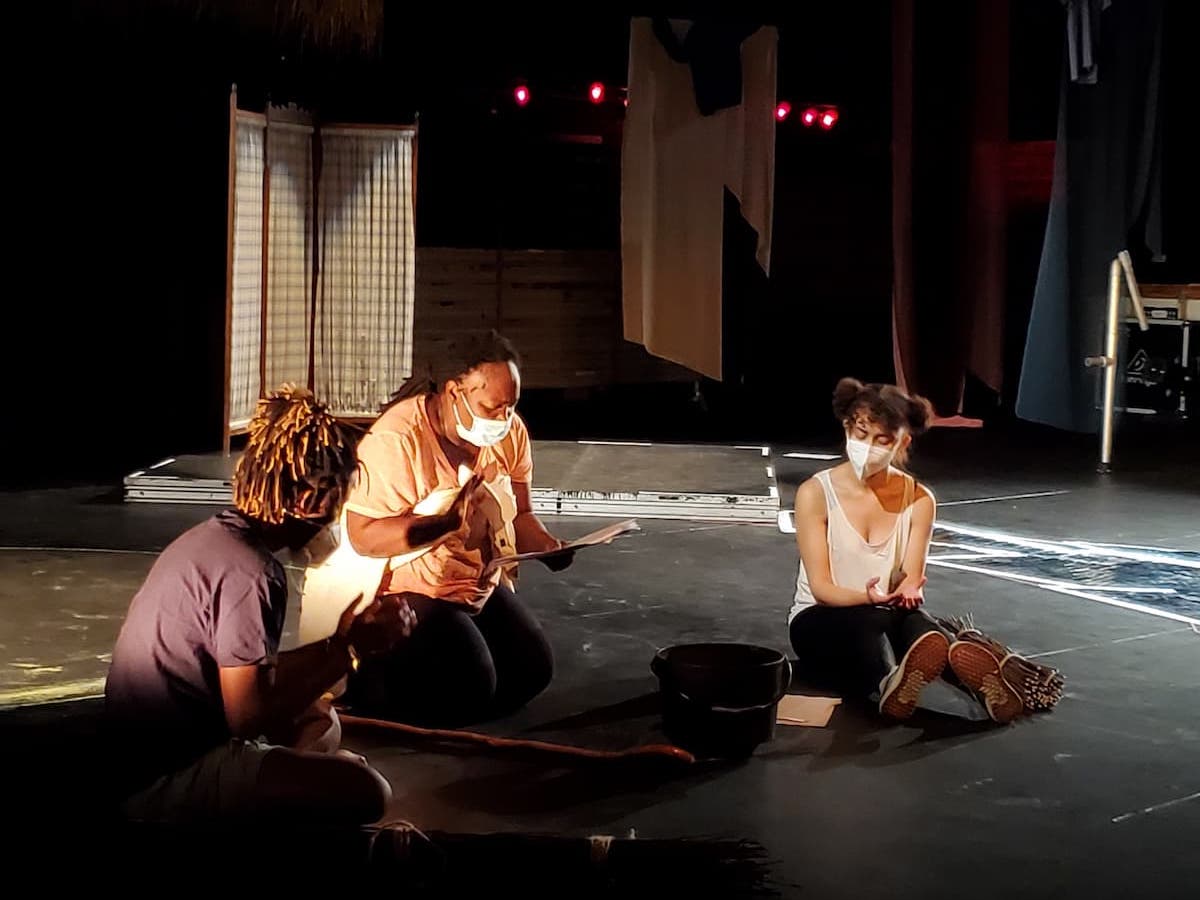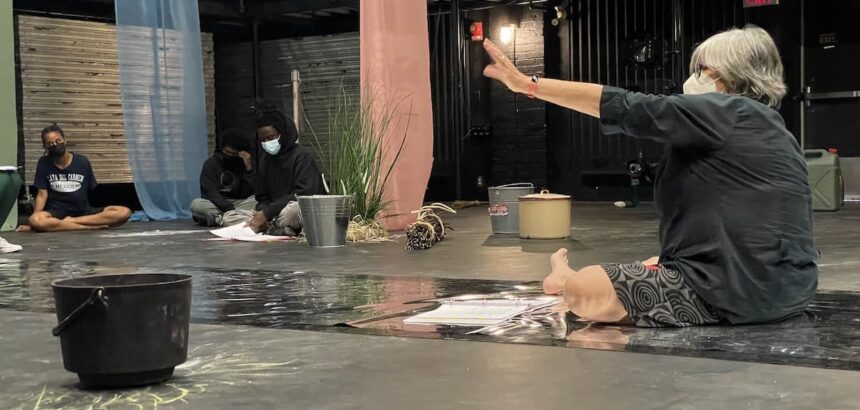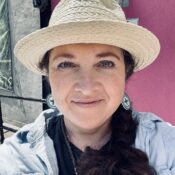I worked with Yvette Nolan in Minneapolis, MN in the summer of 2021, serving as her Assistant Director and happy chauffeur about town during a production of her play The Unplugging. Time together driving to and from rehearsal led to several conversations with her about my research work in Indigenous performance and intercultural theatre. Working in Indigenous theatre research, the work I’m doing is heavily underpinned by Yvette’s groundbreaking legacy as a creator and thinker, so I was beyond thrilled to have the chance to come see her in action in Canada a year later. She said she was working on this incredible new play by Donna-Michelle St. Bernard called The First Stone. Upon reading TFS, I was blown away by the intricacy of this piece and knew I had to get to Toronto to experience it firsthand.
So when I first encountered the room (the figurative and literal room) of DM’s and Yvette’s making, I knew it would be great, and I knew I would leave inspired; because these two incredible makers are inspiring and definitely are great. I didn’t know just how much it would begin to drive the next step of my research. I came to observe, but being a person who has a compulsory need to be “helpful”, I asked Yvette what my role might entail, beyond that of witness. As the living, breathing epitome of collaboration, she invited me to be another brain in the room and continued to affirm the importance of the witness role – “what did you see” or “how was that for you” or “how was that in there” – a common discussion framework following a bit of scene building in which everyone in the room was invited to participate. The role of witness was not a passive, but rather an active, one.
After taking pages upon pages of notes and observations, I made myself a list documenting the other subversions that I noticed in this process, which was being lovingly shepherded by Yvette, DM, and the team on TFS. Some of the most crucial subversions – eliminating hierarchical thinking and pathways to participation, working in the present not the future, breaking down walls between performers and production that typically silo and stymie true collaboration, a model of learning together as opposed to teaching, a near constant yet somehow not overwhelming open stream of communication, a focus on community building and a willingness to hear – none of which, when taken individually, are perhaps that groundbreaking. What makes them so unique is that they all are happening simultaneously, coming together in easy harmony, embraced by those in the room, and creating an atmosphere I choose to call Efficient Freedom (by the time I defend my dissertation I hope this to have a sexier name).

The process I’ve been incredibly lucky to witness is somehow, inexplicably, both beautifully free and flexible, while reassuringly efficient and productive. Having been in many theatre rooms, I can attest that finding this balance is an exceedingly difficult task. And my guess, my early hypothesis as it were, is that this is one part Yvette’s fine-tuned process, one part DM’s generous script, and one huge part the time that’s been devoted to this project, which allows these subversions to move out of the realm of consciousness and into the beautiful space of embodied practice. It seems fair to say that a script like The First Stone, one which is challenging and joyful, violent and comforting, chaotic and still, requires an embodied practice into which those in the room can slip with ease and confidence. These subversions will not be lost on the audience, rather there will be (I suspect) an unspoken feeling of care felt by those witnesses in the room; the result of years of thoughtful, value-based, embodied process coming from every single creator and collaboration and rising to serve the work, and the audience, with equal attention. I think – I trust – that those who witness and those who perform will come together in an environment of mutual caretaking and respect, active to the process in whatever way they enter the room.
Last spring, I took my preliminary exams, a crucial step of my PhD journey at the University of Minnesota. My research work then, as now, centers on intercultural theatre and the trauma that is disproportionately felt by Indigenous collaborators when working in PWIs (primarily white institutions). This work is largely autoethnographic, from a practice as research methodology. At the time, one of my committee members asked me if, in my dissertation, I would be writing a diagnosis or a manifesto. Until I first entered this room, I thought a manifesto might not be feasible. After The First Stone, I have altered my position – I think the model for making healthy, vibrant, supportive, focused but free, structured but lithe, intercultural theatre that affirms individual and cultural values and honors personal epistemologies is right here. I’m so glad I could come to Tkaronto to witness it.



Pingback: The First Stone – Heather Bellingham
Pingback: The First Stone – Heather Bellingham